The painstaking practice of painting on the reverse of glass was developed in China in around 1715, a pivotal moment in trade between China and the West. At that time, reverse mirror paintings were made almost entirely for export and reflect a highly romanticised vision of what China wished to portray to the West.
Christie's to offer property from the late Dowager Countess Bathurst
Gloria, late Dowager Countess Bathurst. © Private Collection
LONDON.- Gloria: Property from the late Dowager Countess Bathurst will be offered across four auctions at Christie’s in July. A dedicated collection sale will be held on 22 July with works also included in three specialist sales throughout the month. The epitome of style and glamour, Gloria was a successful model in the late 1940s and 50s, working for couturiers such as Jacques Fath and Christian Dior. Gloria was also featured in Vogue and went on to become known as Britain’s ‘most perfect outdoor girl.’ The collection across the four auctions comprises 255 lots and is estimated to realise in the region of £2,000,000.
Gloria Clarry (1927-2018) married lawyer David Rutherston (1925-1975) in 1965, son of the artist Albert Rutherston (1881-1953) and nephew of artist Sir William Rothenstein (1872-1945). Following the death of her first husband in 1975, Gloria married Henry, 8th Earl Bathurst (1927-2011) in 1978 and moved to his family seat, Cirencester Park. In 1988, Lord and Lady Bathurst moved again, this time to what would be their last home, Manor Farm, in the beautiful Cotswolds village of Sapperton on the edge of the Cirencester Park estate. Earl Bathurst died in 2011 and Gloria, then the Dowager Countess, remained at Manor Farm, Gloucestershire with regular visits to her London flat in Lennox Gardens, Chelsea. It is from these two properties that the collection being offered for sale originates.
The dedicated Collection sale, GLORIA: Property from the late Dowager Countess Bathurst, to be held on 22 July will include 235 lots spanning Old Master, Impressionist and Modern British paintings, English and European Furniture and Works of Art, alongside Jewellery, Silver and Porcelain and Decorative Furnishings and Objects.
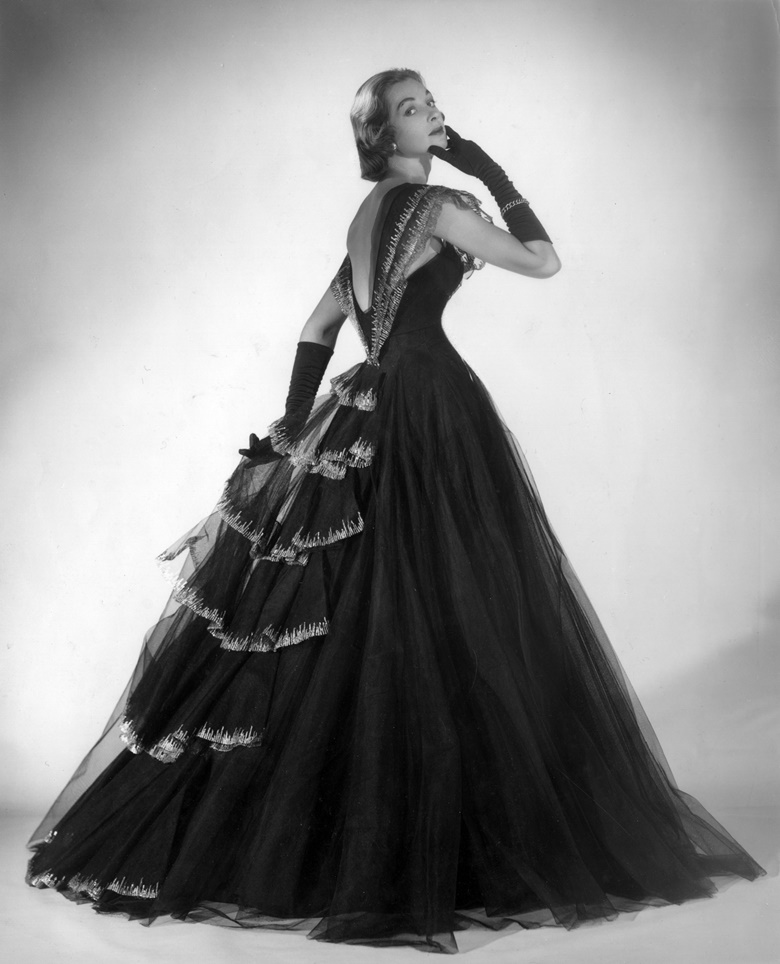
Gloria, late Dowager Countess Bathurst. © Private Collection
PAINTINGS – Collection Sale, 22 July
An outstanding lot amongst the paintings in the sale is the Group portrait of the four eldest children of the 1st Lord Bathurst - Frances (b. 1708), Catherine (b.1709), Benjamin (b.1711) and Henry (b.1714), by James Maubert, Lot 38, (estimate £50,000-80,000). Considered to be amongst Maubert’s finest known works, this is one of two large scale group portraits commissioned from the artist by Allen Bathurst, 1st Baron Bathurst, later 1st Earl Bathurst (1684-1775); the work is one of a series of family portraits in the sale.
Lot 38. James Maubert (Ireland 1666-1746 London), Group portrait of Frances (b. 1708), Catherine (b.1709), Benjamin (b.1711) and Henry (b.1714), the four eldest children of the 1st Lord Bathurst, and a dog, with a servant cutting grapes, signed 'J. Maubart Pinct.' (lower left), oil on canvas, unframed, 66 1/8 x 74 1/8 in. (167.8 x 188.2 cm.). Estimate GBP 40,000 - GBP 60,000 (USD 49,640 - USD 74,460). © Christie's Images Ltd 2020.
Further highlights include a group of family portraits by Philip De László (1869-1937) led by a depiction of Lady Apsley (1895-1966), half-length, in a green dress, signed and dated 'de László/ 1924' Lot 78,(estimate £25,000-35,000), which was presented to Lord and Lady Apsley on the occasion of their wedding in 1924.
Lot 78. Philip de László (1869-1937), Portrait of Lady Apsley (1895-1966), half-length, in a green dress, with a jade bead necklace, signed and dated 'de László/ 1924' (lower right), oil on canvas, 37 ¼ x 28 ½ in. (94.6 x 72.5 cm.). Estimate GBP 25,000 - GBP 35,000 (USD 31,025 - USD 43,435). © Christie's Images Ltd 2020.
ROYAL & DIPLOMATIC GIFTS – Collection Sale, 22 July
Given by Queen Anne (1665-1714) to Frances, Lady Bathurst née Apsley (1653-1727); a Queen Anne ‘Bizarre’ Embroidered Bedcover, possibly by James Leman, circa 1710, Lot 18 (estimate £25,000-40,000). Lady Bathurst, had been a Maid of Honour to the young princesses and was an intimate friend of both Queen Anne and her sister, Queen Mary, as evidenced by a surviving cache of letters from Queen Mary to Frances Bathurst.
Given by Queen Anne (1665-1714) to Frances, Lady Bathurst née Apsley (1653-1727). Lot 18. A Queen Anne ‘Bizarre’ Embroidered Bedcover, possibly by James Leman, circa 1710; 18 5/8 in. (48 cm.) wide, the soup-tureen stands. Estimate GBP 25,000 - GBP 40,000 (USD 31,025 - USD 49,640). © Christie's Images Ltd 2020.
The ivory linen ground quilted in pale yellow and embroidered in silks and metal thread with central, oval, frilled medallion and four corner medallions, all with a couched gilt ground, the linen field embroidered with flame-filled cornucopias and ‘Bizarre’ motifs resembling musical horns, the original borders/valance worked with similar motifs, reconfigured to fit a larger bed with bolster.
.jpg)
.jpg)
Lot 6. A pair of Chinese export reverse mirror paintings, mid 18th century. 30 x 19 in (76 x 48cm). Estimate GBP 30,000 - GBP 50,000 (USD 37,230 - USD 62,050). © Christie's Images Ltd 2020.
Each depicting a courtly family within a landscape, in contemporary European black-and-gilt-japanned frames.
Both the practice of painting on glass and the flat glass itself were introduced to China in the late 17th and early 18th centuries. China had a long history of producing utensils and decorative objects in glass. The glass workshop in the Forbidden City was established in 1696, but no flat glass was produced and when it was attempted it was reported that the manufacturers ‘do not know how to manufacture it with the proper materials’ (Breton de la Martinière, China, its costume, art etc, translated 1813). However, visiting dignitaries had brought mirrors as gifts for the Emperor, such as a Dutch mission which in 1686 presented the Emperor Kangxi with a pair of large European mirrors, the quality of which was a revelation to the Chinese.
The practice of painting on mirrors developed in China after 1715 when the Jesuit missionary Father Castiglione arrived in Peking. He found favour with the Emperors Yongzheng and Qianlong and was entrusted with the decoration of the Imperial Garden in Peking. He learnt to paint in oil on glass, a technique that was already practiced in Europe but which was unknown in China in the 17th century. Chinese artists, who were already expert in painting and calligraphy, took up the practice, tracing the outlines of their designs on the back of the mirror plate and, using a special steel implement, scraping away the mirror backing to reveal the glass that could then be painted. Common designs included still lives, birds and groups of figures, usually depicted against backgrounds of rivers or pavilions.
Many mirrors were brought back to Europe by the companies who routinely plied their trade in Asia, with some carried as ‘private trade’ by crew members (Graham Child, World Mirrors, London, 1990, pp. 361–386). The demand for such painting was fuelled by the mania in Europe for Chinese fashions, promoted by the likes of Sir William Chambers, whose Designs for Chinese Buildings, Furniture, Dresses, Machines and Utensils was issued in 1757, and which found expression in the homes of the fashionable cognoscenti, such as the Chinese Bedroom at Badminton House, Gloucestershire, fitted up for the 4th Duke of Beaufort by William Linnell in 1752-54.
A similar pair of mirrors, of almost identical size, were formerly in the collection of Raine, Countess Spencer, sold Christie's, London, 13 November 2019, lot 259 (£62,500, including premium).
Lot 4. A Near Pair of Chinese Famille Verte Jars and Covers, Kangxi Period (1662-1722);15 3/8 in. (39 cm.) high, overall including covers. Estimate GBP 2,000 - GBP 3,000 (USD 2,482 - USD 3,723). © Christie's Images Ltd 2020.
Decorated with vibrant panels depicting ladies at leisure in a courtyard setting with castellated walls and domed rooves, the panels separated by dividers of trailing and fruiting vine leaves, each base with a double circle in underglaze blue.
Further royal lots include a splendid late 18th century Berlin (KPM) porcelain 'Grand Duke of Courland' pattern part dinner-service, given to Henry Bathurst, 3rd Earl Bathurst (1762-1834) when Secretary of State for War and the Colonies (1812-1827) by Friedrich Wilhelm III, King of Prussia (1770-1840) Lot 98, (estimate £15,000-25,000).
Given to Henry Bathurst, 3rd Earl Bathurst (1762-1834) when Secretary of State for War and the Colonies (1812-1827) by Friedrich Wilhelm III, King of Prussia (1770-1840). Lot 98. A Berlin (KPM) porcelain 'Grand Duke of Courland' pattern part dinner-service, late 18th century, blue sceptre and dash marks, pressnummer 31 and incised numerals. Estimate GBP 25,000 - GBP 40,000 (USD 31,025 - USD 49,640). © Christie's Images Ltd 2020.
Decorated with floral bouquets and insects, within gilt swag and green-ground borders, comprising: two ice-pails, covers and two liners, two oval two-handled soup-tureens, covers and stands, two vegetable-tureens, covers and stands, two footed bowls, eight oval serving-platters, in sizes, four two-handled double-lipped sauceboats and five stands, two spoons, four octagonal twin-handled baskets, four octagonal chestnut-baskets, six chamfered triangular dishes, four chamfered square dishes, one smaller, three circular serving-dishes, in sizes, twelve dinner-plates, eighteen dinner-plates with pierced borders, four octagonal dessert-plates with pierced borders and twenty-four chocolate-cups and covers.
Berlin services of this type, incorporating strong neo classical elements into the design, and with this decoration, known as the 'Kurländer Muster' pattern, were frequently intended as important diplomatic gifts. A service dating to around 1795 with the same pattern as the present lot was made for Peter Biron (1724-1800), the last Duke of Courland and another, with slight variants to the design (with white moulded swags) was produced two years later for Crown Prince Friedrich Wilhelm III himself. The present service was probably given by Fredrich Wilhelm III, when King of Prussia, to the 3rd Earl Bathurst (who held various governmental posts during the Napoleonic wars including serving as Secretary of State for War and the Colonies from 1812) in the early 19th century. See Erich Köllmann and Margarete Jarchow, Berliner Porzellan, Munich, 1987, Vol. II, p. 458, fig. 305 for an illustration of an ice-pail with the same pattern as the present lot, and Vol. I, p. 156 for the associated discussion of the Courland service; see also Erich Köllmann and Margarete Jarchow, ibid., Munich, 1987, Vol. II, p. 460, fig. 308 for an icepail from the Crown Prince's service with white moulded swags and rose sprig decoration.
Lot 99 and 100, two Vienna Porcelain rectangular still life plaques by Josef Nigg, circa 1817-19, each with an estimate of £40,000-60,000; almost certainly given to the 3rd Earl by Francis I, Emperor of Austria, circa 1820; and correspond to examples in the Royal Collection. The sale also includes gifts from HRH The Duchess of Gloucester (1776-1857) to Lady Georgina Bathurst (1792-1874) and from Queen Mary (1867-1953), Lilias, Countess Bathurst (1871-1965).
Given to the 3rd Earl by Francis I, Emperor of Austria, circa 1820. Lot 99. A Vienna Porcelain rectangular still life plaques by Josef Nigg, dated 1819 impressed 817 and P; 16 ¾ in. x 12 ½ in. (42.5 cm. x 31.8 cm.). Estimate GBP 40,000 - GBP 60,000 (USD 49,640 - USD 74,460). © Christie's Images Ltd 2020.
Painted with a scroll-handled vase filled with flowers including roses, tulips, poppies, convolvulus and grasses, three insects and a dew drop resting on the petals, before a glass bowl of grapes and a fruiting peach branch, all on a stone ledge, signed and dated ‘Jos. Nigg fecit 1819 / in Wien.’, in a contemporary ormolu frame.
Given to the 3rd Earl by Francis I, Emperor of Austria, circa 1820. Lot 100. A Vienna Porcelain rectangular still life plaques by Josef Nigg, circa 1817 impressed 816 and P; 16 ¾ in. x 12 ½ in. (42.5 cm. x 31.8 cm.). Estimate GBP 40,000 - GBP 60,000 (USD 49,640 - USD 74,460). © Christie's Images Ltd 2020.
Painted with a glass vase filled with flowers including wild roses, poppies, lavender and forget-me-nots, dew drops resting on the petals, before an arrangement of cobnuts, redcurrants, blackberries and a peach, all on a stone ledge, signed and dated ‘Jos: Nigg. fecit / in Wien 1817’, in a contemporary ormolu frame.
Joseph Nigg (1782-1863) studied under Johann Drechsler at the Academy in Vienna, before becoming arguably the most accomplished flower painter ever to be employed at the Vienna porcelain manufactory. Active at the factory between 1799 and 1843, he become the head flower painter in 1816 and a tutor of flower painting from 1835. His compositions of flowers and fruits, often placed on a marble or stone ledge, were inspired by 17th century Dutch masters and are defined by their exuberance and botanical accuracy. Nigg also painted on vases and other forms at Vienna and continued to work in oil on canvas and in watercolours and pastels. However, it is on porcelain plaques that his talent as a painter is most evident, his style typifying the richness of the decorative arts of the Bidermeier period in Austria. The two plaques in the following lots, were painted when Nigg was at the height of his career at Vienna. A large porcelain plaque of flowers was presented by Nigg on behalf of the Viennese factory, at the Great Exhibition of 1851
In 1818 four superb pictures by Nigg (forming two pairs) were given by Francis I, Emperor of Austria (1768-1835), to George IV, when Prince Regent, as diplomatic gifts in the wake of the Napoleonic wars, and remain in the Royal Collection at Clarence House (RCIN 404323, 404324, 404325, 404326). Jutsham's Inventory records that the plaques were 'Received 22 Feb: 1818 From Prince Esterhazy the Austrian Ambassador'. The Prince Esterhazy referred to is Paul III Anton, Prince Esterházy (1786-1866), who was the Austrian ambassador to the Court of St. James. Given the key governmental positions held by Henry, 3rd Earl Bathurst during the Napoleonic wars including, from 1812, that of Secretary of State for War and the Colonies, it seems highly probable that the Bathurst plaques were also gifts from the grateful Emperor, delivered by his ambassador. The fact that the examples in the Royal Collection retain their original ormolu frames, of apparently identical design to those fitted to the Bathurst plaques, when considered alongside contemporary newspaper reports which detail Esterházy entertaining Bathurst at his country house, can only further strengthen the argument for them being Imperial Austrian gifts.
APSLEY HOUSE & ROBERT ADAM – Collection Sale, 22 July
When the Lord Chancellor, Henry, 1st Baron Apsley (later 2nd Earl Bathurst, 1714-94) wanted a prominent London house, he turned to the most fashionable architect designer of the period, Robert Adam (1728-92) to design Apsley House at the top of Piccadilly whose address is also famously known as No. 1 London. Twenty-six of Adam’s designs for the house, of circa 1778-79, have survived in the collection of The Sir John Soane Museum, including a design for the library over mantel offered in this sale, Lot 25 (estimate: £10,000-15,000). The most valuable lot in sale of furniture is Lot 26, a pair of elegant George III sycamore-inlaid and ebony banded, mahogany serpentine commodes, possibly by Ince & Mayhew, circa 1775, that were almost certainly supplied to the Lord Chancellor for Apsley House, London, or Cirencester Park, Gloucestershire (estimate £50,000-80,000).
Supplied by Robert Adam to Henry, 2nd Earl Bathurst (1714-1794) for Apsley House, London and at Apsley House until circa 1807. Lot 25. A George III giltwood overmantel mirror, designed by Robert Adam for Apsley House, London, for Henry, 2nd Earl Bathurst, 1778, the carved elements attributed to Sefferin Nelson. 58 x 74 in (147.5 x 188 cm). Estimate: GBP 10,000 - GBP 15,000 (USD 12,410 - USD 18,615). © Christie's Images Ltd 2020.
Of architectural form surmounted by a stag (lacking antlers) reclining on a tablet decorated with paterae and draped swags, the inverted breakfront frieze above a central rectangular plate between further narrow plates divided by slender square pilasters, conceived with further decorative elements like ly subsequently removed, minor losses and replacements, the gilding retouched.
When the Lord Chancellor, Henry, 1st Baron Apsley (later 2nd Earl Bathurst, 1714-94), wanted a prominent London house, he turned to the most fashionable architect-designer of the day, Robert Adam (1728-92), to design Apsley House at the top of Piccadilly - No. 1 London. The five-bay red brick mansion was built between 1771-78 at a cost of £10,000, and was reputed to have been ‘the most notable act of his [Bathurst's] life’. The commission also comprised Adam interiors including a stylish Etruscan-style room, and furnishings. Twenty-six of Adam’s designs for furniture for the mansion dated circa 1778-79 have survived, including a design for this overmantel mirror, and are now in the collection of Sir John Soane's Museum, London. Adam was assisted in his endeavour by many of the craftsmen he used on a regular basis: Ince & Mayhew, Sefferin Nelson, Joseph Rose, John Devall and Antonio Zucchi. The importance of the commission was such that Adam referred to it in the Preface to his Works of Architecture (vol. II, 1773). In 1779, following its completion, Hannah More, the Countess Bathurst’s friend recorded: ‘Apsley House is finished; and most superbly furnished, and, which is not always the case with superb things, it is very beautiful and teaming with patriotism, for all her glasses, hangings and ornaments are entirely English’. The Bathurst family remained in residence at Apsley House until 1807 when the 3rd Earl Bathurst sold the lease for £16,000 to Richard, Marquess Wellesley (1760–1842), elder brother to Arthur Wellesley (1769-1852), later ennobled as the Duke of Wellington following his military victories in the Peninsular and Napoleonic wars, and who from 1817 was the owner of Apsley House, retaining the architect Benjamin Dean Wyatt (1775-1852) to remodel the house in the form that exists today.
A design for this architectural overmantel mirror forms part of the Robert and James Adam office drawings for Apsley House, London, held at the John Soane Museum, London (SM Adam Volume 20/175). It is inscribed ‘Glass frame for the Library for The Earl of Bathurst’, and ‘Adelphi, 12th June 1778’; the latter, the location of the Adam office. Although some of the original decorative mouldings were subsequently removed, in all other respects - form, glass plate configuration and the recumbent stag surmounting the tablet-centred frieze, relating to the Earl Bathurst’s coat-of-arms and supporters, ‘two stags argent, each gorged with a collar gemel ermines’ - this mirror is undoubtedly modelled on the Adam design, and is almost certainly the one supplied to Apsley House in circa 1778; a date that coincides with other Adam furniture designs for the house made between 1778 and 1779. The Library where this overmantel was situated was on the ground floor of the mansion. This overmantel, and all the mirrors at Apsley House, have been attributed to Sefferin Nelson (1769-c. 1796), carver and gilder of Marshall St, Golden Square, London, who executed Adam’s mirrors for Derby House, London (E. Harris, ‘Adam at No. 1 London’, Country Life, 1 November 2001, p. 100). The Drummond Bank accounts for Lord Bathurst show that Nelson was paid the large sum of £259 in 1779, and £200 in 1780 (ibid.). Nelson was one of Adam’s preferred craftsmen, working with the architect-designer on other commissions such as Croome Court, Worcestershire and Audley End, Essex.
Lot 26. A pair of George III sycamore-inlaid and ebony banded, mahogany serpentine commodes, possibly by Ince & Mayhew, circa 1775; 36 in. (91.5 cm.) high; 48 ½ in. (123 cm.) wide; 24 ½ in. (62 cm.) deep. Estimate GBP 50,000 - GBP 80,000 (USD 62,050 - USD 99,280). © Christie's Images Ltd 2020.
The shaped tops each with deep crossbanding and spot-inlaid edges, one chest with four graduated long drawers, the other with a deep top drawer faced as two drawers and two further graduated drawers, both on slender tapering square legs, repairs and replacements to feet.
These stylish commodes, with their graceful serpentine form and superb flame mahogany veneers inlaid with contrasting sycamore and ebony, are a testament to the decorative language of the Neo-classical spirit of the late 18th century. They were possibly made by the London cabinet-making firm of Ince & Mayhew. The distinctive spot-inlaid edging of the shaped tops of these commodes is found on several pieces with strong attributions to the firm, notably a pair of rosewood and marquetry bow-fronted commodes, circa 1780, attributed to Ince & Mayhew, which formed part of the commission for the 4th Duke of Marlborough for either Marlborough House, London, or Blenheim Palace, Oxfordshire, subsequently sold Christie's, London, 25 May 1972, lot 89 (H. Roberts, ‘Nicely Fitted Up’: Furniture for the 4th Duke of Marlborough’, Furniture History, vol. 30, 1994, p. 139, fig. 29). The same border is also found on a group of furniture from Badminton House, Gloucestershire, which is attributed to the firm based on large payments made between 1778 and 1798 by the Dowager Duchess of Beaufort; this commission includes a pair of side tables and a small oval-topped table (L. Wood, Catalogue of Commodes, London, 1994, pp. 230-231, figs. 217, 218-219).
The distinctive gilt-metal drawer handles are also found on another commode in this group of furniture possibly made by Ince & Mayhew (lot 28). Similar patterns are included in metal-work pattern books of the period suggesting it was a popular and widespread pattern (N. Goodison, ‘The Victoria & Albert Museum’s Collection of Metal-work Pattern Books’, Furniture History, vol. 11, 1975, no. 23, and T.R. Crom, An Eighteenth Century English Brass Hardware Catalogue, Gainesville, 1995, p. 89, fig. 595, p. 112, figs. 800-802).
French actress and artist Sarah Bernhardt is thought to have sculpted the model for this striking bronze inkwell in 1879. Shaped in the form of a recumbent winged sphinx with a spiny reptilian tail, it marks a bold departure from the artist’s more conventional or Romantic subjects.
Its form may be a direct reference to the artist’s own life: in 1879 Bernhardt was rehearsing for the role of Blanche de Chelles in Octave Feuillet’s play Le Sphinx. In the play the mysterious and demonic heroine wore a poison ring in the form of a sphinx.
The inkwell appears to have been conceived on one level as a celebration of her role in Feuillet’s play, and on another as an evocation of what Bernhardt perceived herself to be. She was described by the critic Jules Lemaître as ‘a distant and chimerical creature, both hieratic and serpentine, with a lure both mystical and sensual’.
Sarah Bernhardt, Self-Portrait as a Sphinx (inkwell). Bronze, dark-brown patina. 12¼ in (31 cm) high. Estimate GBP 20,000 - GBP 30,000 (USD 24,820 - USD 37,230). © Christie's Images Ltd 2020.
BROTHER PAINTERS Albert Rutherston & Sir William Rothenstein – Collection Sale, 22 July
This auction provides a rare opportunity for collectors to acquire works by brother artists Sir William Rothenstein (1872-1945) and Albert Rutherston, R.W.S. (1881-1953), Gloria’s first father in law. Many of the works have never been offered on the open market, passing by descent in the family. Both brothers attended the Slade School of Art and were influential figures in the Modern British Art scene during the early 20th century, counting artists such as Auguste Rodin, William Orpen, Walter Sickert, Augustus John and Charles Conder amongst their circle with works by the latter two artists included in the sale. There are also portraits of their friends and family, such as William’s portrait of a young Albert, Lot 160, (estimate £600-1,000) as well as works which show defining moments in Albert’s oeuvre such as A laundry girl, Lot 136, (estimate £2,000-3,000) and a painted screen Romance, Lot 141, (estimate £3,000-5,000)

.jpg)
Lot 136. Albert Daniel Rutherston (1881-1953), A Laundry Girl, circa 1906. Oil on canvas. 30 x 25 in (76.3 x 63.5 cm). Together with: Albert Daniel Rutherston, A Sketch for Laundry Girls. Pencil on paper. 18¾ x 24 (47.7 x 61 cm). Estimate GBP 2,000 - GBP 3,000 (USD 2,482 - USD 3,723). © Christie's Images Ltd 2020.
JEWELS Important Jewels, 30 July and Collection Sale 22 July
The diverse and important jewellery is to be offered in both the Collection sale on 22 July and in the Important Jewels sale on 30 July. It offers an evocative and very personal window into Gloria’s private world through the lens of chosen acquisitions, inheritance and personal gifts amassed throughout a lifetime. Many pieces have historic aristocratic or royal provenance. Lots from the Important Jewels sale on 30 July include: an Art Deco Enamel, Gem and Diamond Pendant Watch, Cartier, (estimate £30,000-40,000). The Art Deco pendent watch showcases Cartier’s highly innovative approach to design and attention to detail. This small jewel is lavishly set with various gem stones and decorated with fine enamelling displaying the strong chromatic contrasts and geometry so typical of the period; the result is sleek and totally modern but the secret compartment, engraved poem and level of craftsmanship are redolent of an intricate Renaissance jewel conveying a hidden message to the wearer. It was given by Allen Bathurst, Lord Apsley to his wife Viola Apsley, neé Meeking, probably to mark their wedding in 1924.
By family tradition, a gift from Queen Anne (1665-1714) to Catherine Apsley, the first Countess Bathurst (1688-1768), this understated Antique Natural Pearl and Diamond Necklace composed of 39 natural pearls, pearl shaped and old-cut diamonds, is another highlight from the 30 July Important Jewels sale.
For centuries natural pearls were more highly prized than diamonds and were the preserve of nobility and society’s wealthiest elite. This necklace was undoubtedly considered a great heirloom and was proudly displayed as such in both Thomas Gainborough’s painting of Tryphena, Countess Bathurst (d. 1807) and Sir James Jebusa Shannon’s painting of Lilias, Countess Bathurst (1871-1965). The simple strand of graduated pearls remained a prerequisite into modern times for young women when they were photographed for society magazines to mark their coming of age or engagement (estimate £10,000-15,000).
The most valuable piece from the collection, is an early 20th Century Diamond Tiara, commissioned from Cartier by Lilias, Countess Bathurst (1871-1965). Old and rose-cut diamonds, silver and gold, (circa 1910) the stones were taken from two tiara’s Countess Bathurst inherited from her mother Lady Glenesk (Important Jewels, 30 July, estimate £200,000-300,000).
The tiara is the epitome of aristocratic splendour and the delicate Belle Epoque scrolling motifs were inspired by 18th century architectural details. Compared to many Victorian tiaras with their often heavy style of mounting and high surmounts this early 20th century example must have felt comparatively ethereal, and it is not surprising that Gloria Bathurst clearly enjoyed wearing it and was photographed wearing this beautiful head ornament on various grand occasions.
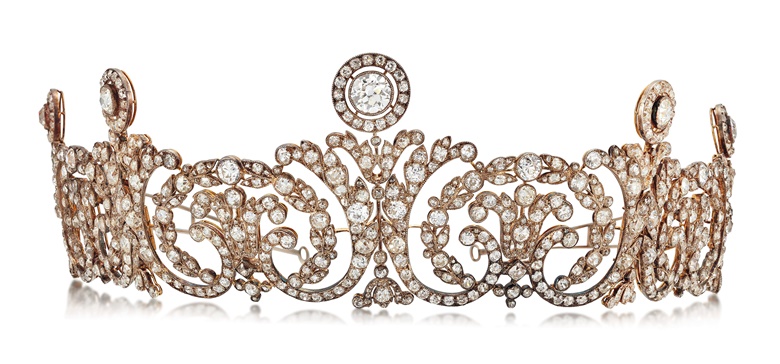
Early 20th century diamond tiara, attributed to Cartier, circa 1910. Estimate GBP 200,000 - GBP 300,000 (USD 260,000 - USD 390,000). © Christie's Images Ltd 2020.
The collection sale on 22 July also includes 23 lots of jewellery, some with royal provenance, dating from the 18th century to the modern day and with estimates ranging from £500 - £25,000.
.jpg)
Lot 86. A 19th-century topaz suite. Estimate GBP 18,000 - GBP 25,000 (USD 22,338 - USD 31,025). © Christie's Images Ltd 2020.
Comprising an oval-cut topaz collet necklace with old-cut diamond spacer connections; a topaz collet headband; two pairs of topaz earrings, each adapted; a pear shaped topaz and old-cut diamond pendant brooch with diamond detail, adapted, together with an associated topaz double headed serpent brooch and a pair of later set topaz and diamond earrings, mounted in gold, necklace 41.5 cm, head band collet section 27 cm.
Provenance: By family tradition, left by HRH The Princess Amelia (1783-1810), daughter of George III, to her Lady in Waiting
The Hon. Mrs George Villiers (1775-1856) and by descent to her great granddaughter
Lilias Borthwick, later Countess Bathurst (1871-1965) and by descent in the Bathurst family.
.jpg)
Lot 227. Cut-cornered rectangular aquamarine, marquise-cut diamond and textured feather shoulders, 1965, ring size Q (sprung insert). Estimate GBP 2,000 - GBP 3,000 (USD 2,482 - USD 3,723). © Christie's Images Ltd 2020.
Provenance: Given to Gloria Clarry, later Countess Bathurst (1927-2018) by her first husband David Rutherston (1925-1975) on the occasion of their engagement, in 1965.
FURTHER HIGHLIGHTS TO BE INCLUDED IN SPECIALIST SALES
The collection includes an important Ben Nicholson, 1945 (still life), (estimate £500,000– 800,000) to be offered in One: A Global Sale of the 20th Century London on 10 July.

Ben Nicholson, 1945 (Still Life), 1945. Oil and pencil on canvas laid on paper. 24 x 22 in (61 x 55.9 cm). Estimate: GBP 500,000-GBP 800,000. © Christie's Images Ltd 2020.
An additional work will also be included in the Classic Art Evening Sale: Antiquity to 20th Century, on 29 July. A Picasso drawing is offered in the Modern Edition: Works on Paper and Prints sale online, 15 June – 1 July.
Significant jewellery in addition to the piece referenced above will also be offered in the Important Jewels sale on 30 July.
MANOR FARM INTERIORS
The interior of the Library at Manor Farm, Sapperton which includes left to right, lots 163, 12 (part) and 141 (part). The Entrance Hall at the property which features, left to right, lots 176, 178 (part) and 181 (part).

/https%3A%2F%2Fprofilepics.canalblog.com%2Fprofilepics%2F1%2F0%2F100183.jpg)
/https%3A%2F%2Fstorage.canalblog.com%2F03%2F02%2F119589%2F96711876_o.jpg)
/https%3A%2F%2Fstorage.canalblog.com%2F11%2F31%2F119589%2F94773502_o.jpg)
/https%3A%2F%2Fstorage.canalblog.com%2F20%2F83%2F119589%2F94772815_o.jpg)
/https%3A%2F%2Fstorage.canalblog.com%2F26%2F72%2F119589%2F75604929_o.jpg)
/https%3A%2F%2Fstorage.canalblog.com%2F59%2F60%2F119589%2F26458628_o.jpg)




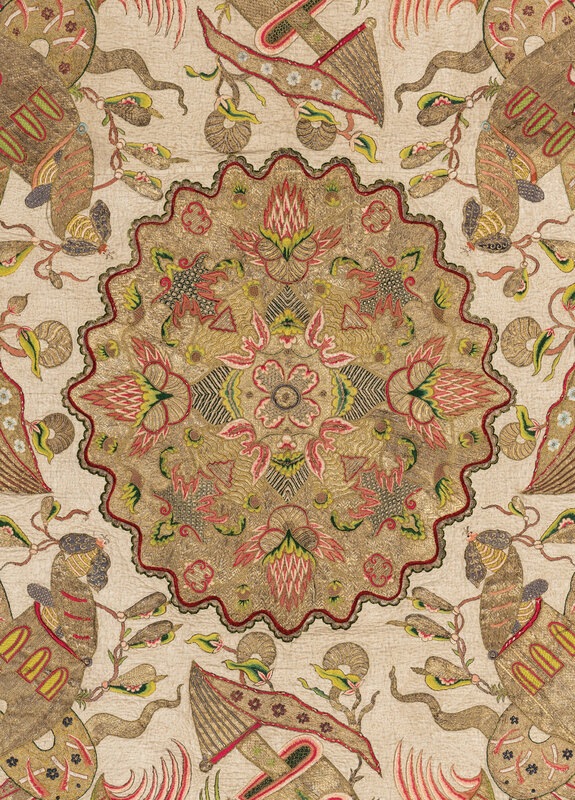


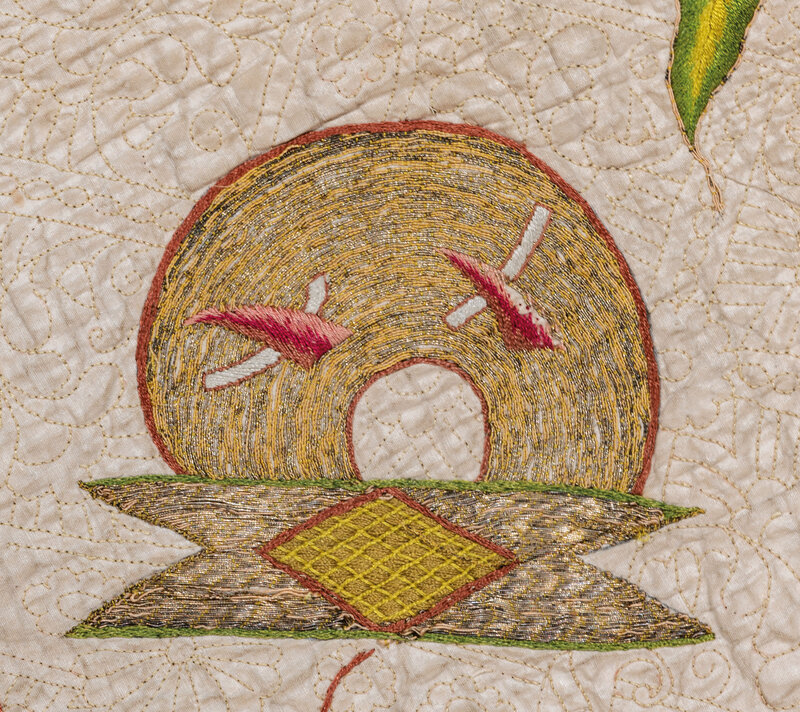





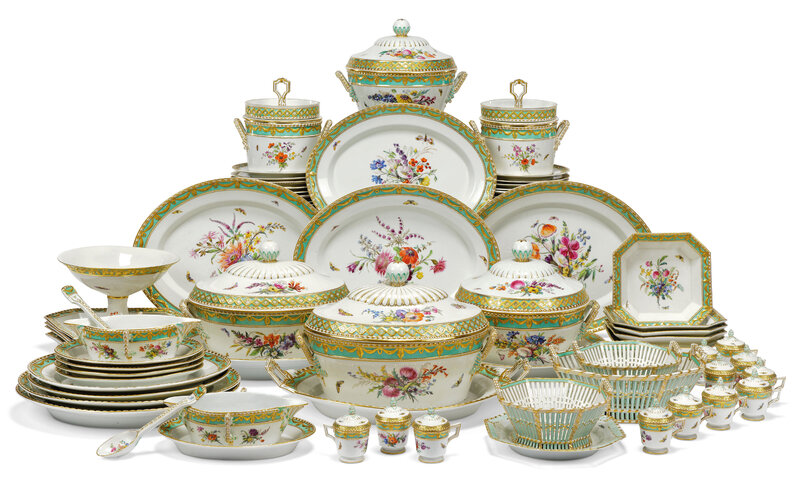


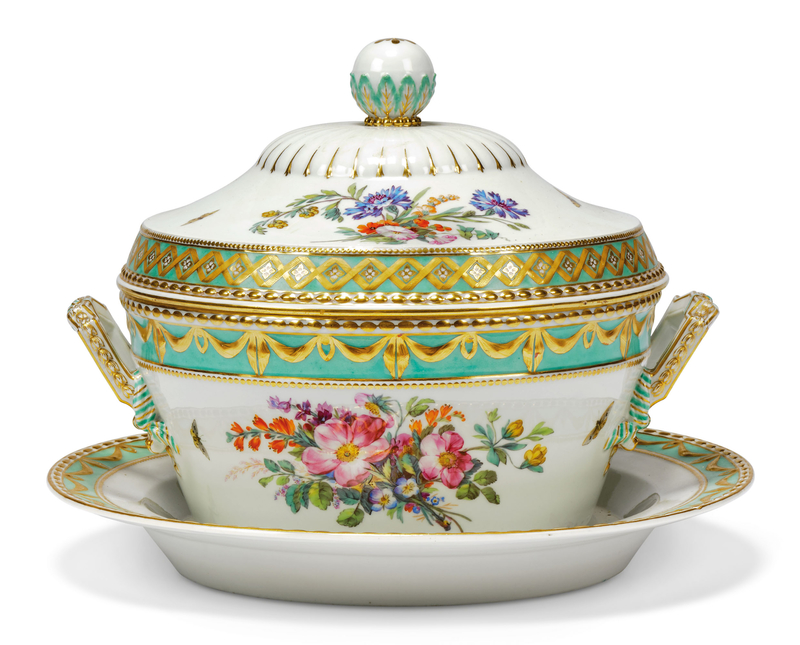
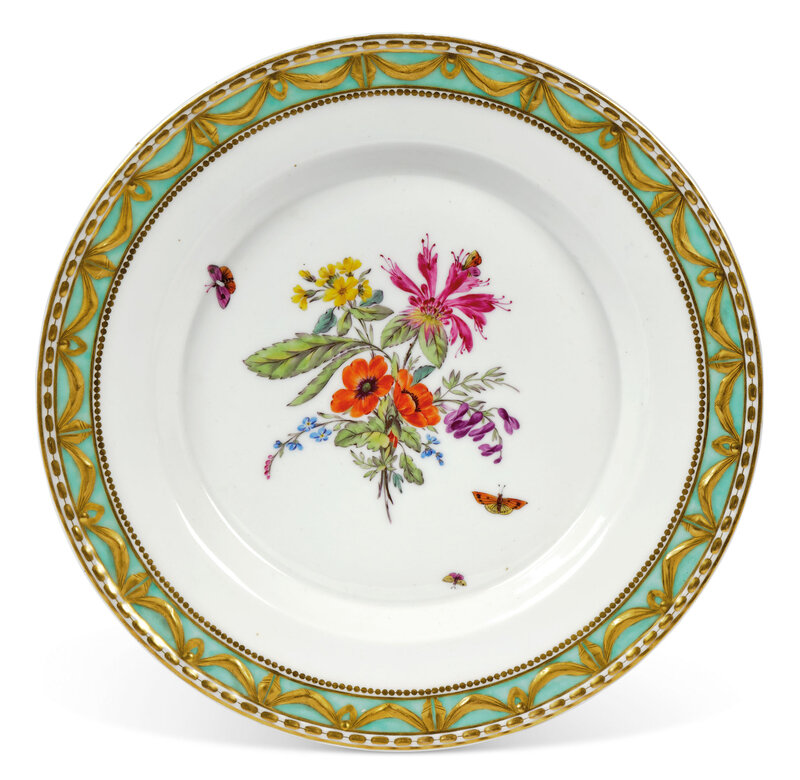

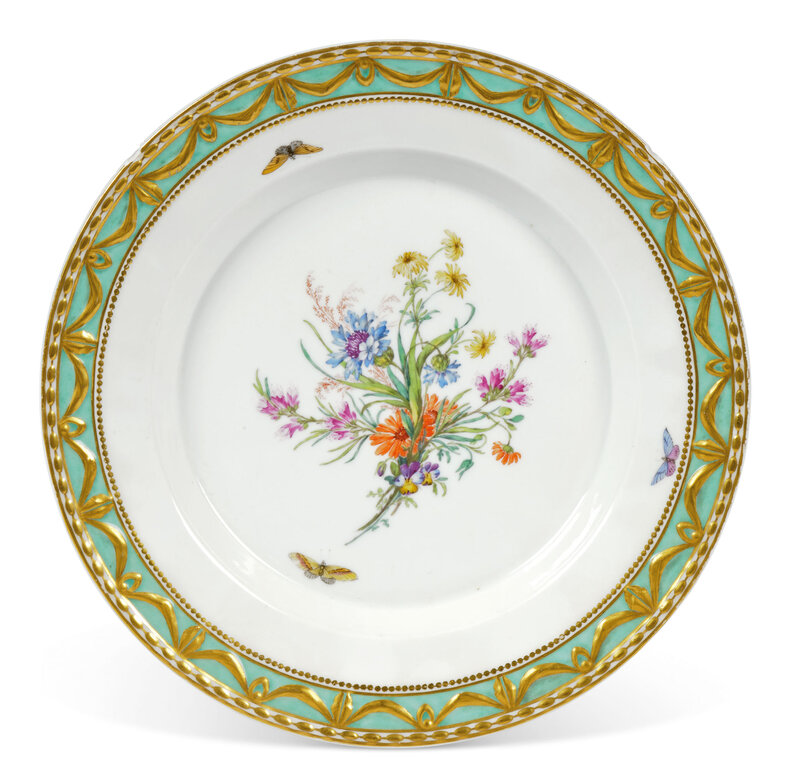









/http%3A%2F%2Fstorage.canalblog.com%2F07%2F18%2F119589%2F110945949_o.jpg)
/image%2F1371349%2F20240417%2Fob_9708e8_telechargement.jpg)
/image%2F1371349%2F20240417%2Fob_91ce89_x5173-online-caravaggio-the-martyrdom.jpg)
/image%2F1371349%2F20240417%2Fob_d3a4e9_437713486-1653094185460594-71860440393.jpg)